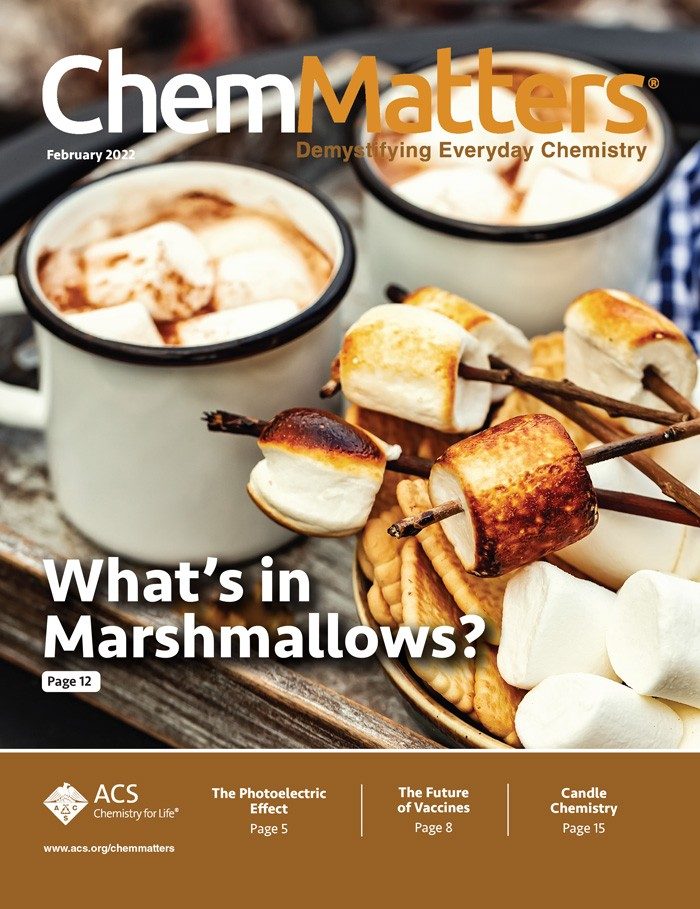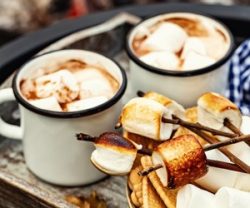February 2022
Features
What's in Marshmallows?
By Leigh Kriestsch/Chemical & Engineering News
Three simple ingredients make up marshmallows. But getting the right texture and sweetness requires just the right amounts of each.
Teacher's Guide (.docx) | Spanish Translation of Article (PDF)

Putting Electrons to Work
By Brian Rohrig
Find out how the nature of light, Einstein, and grocery store doors are connected! (Yes, it has something to do with electrons.)
Teacher's Guide (.docx) | Photo-vowel-ic Effect Puzzle (PDF)
*Available by subscription only

Could Future Vaccines be Pain-Free?
By Max G. Levy
Do you hate needles? You’re not the only one. The good news is that alternatives are in the works. The not-so-good news is that they’re not ready for prime time just yet.
Teacher's Guide (.docx)
*Available by subscription only

Shining a Light on Candles
By Max G. Levy
Candles have been around for millennia, and remain popular in homes today. Take a closer look, and you’ll be amazed at how much chemistry is packed in these ancient inventions!
Teacher's Guide (.docx)
*Available by subscription only
Departments
Open for Discussion: The Elements of Truth - What Does Philosophy Have to do with Science?
By Danielle Sedbrook
Philosophers’ descriptions of science aren’t always simple or settled, and they can spark heated debate. Thinking about science like a philosopher might help you understand the world a little better.
Chemistry in Person: A Leap into the Philosophy of Chemistry
By Danielle Sedbrook
Vanessa Seifer explores how chemistry can help explain the relationship between physics and other sciences. She is interested in intellectual questions such as: Can molecules be summed up as combinations of protons, neutrons, electrons and the physical forces that guide them, or are molecules more than the sum of their parts?







